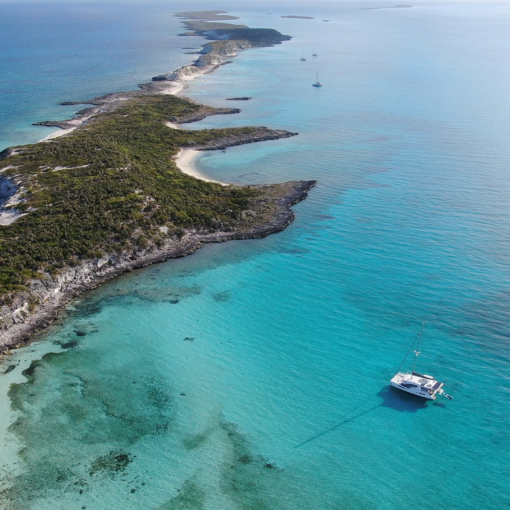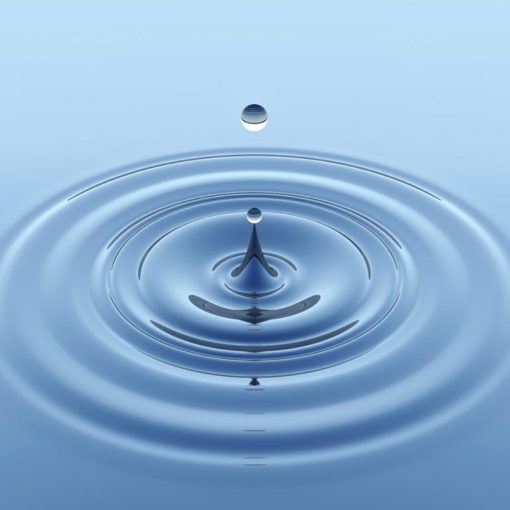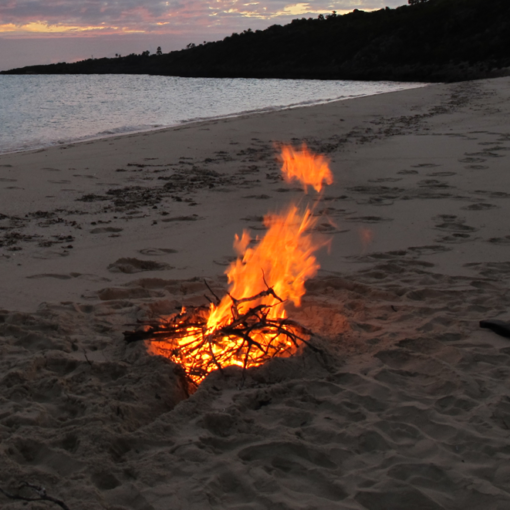
After a restful week at Staniel Cay, we headed north, back to the land of cuts and current.
We anchored at the large bay on the west side of Compass Cay. It is a beautiful spot, with clear white sand everywhere and great views of nearby cays. We were forced to anchor on the bay’s outer fringe due to the shallow depth, but the conditions were peaceful with only moderate current. With inches under the keel, this is definitely not a place to be in unsettled weather.
Compass Cay is officially restricted to guests at the Compass Cay Marina, so beyond briefly visiting the beach in front of us we didn’t get a chance to explore the cay itself.
Rachael’s Bubble Bath
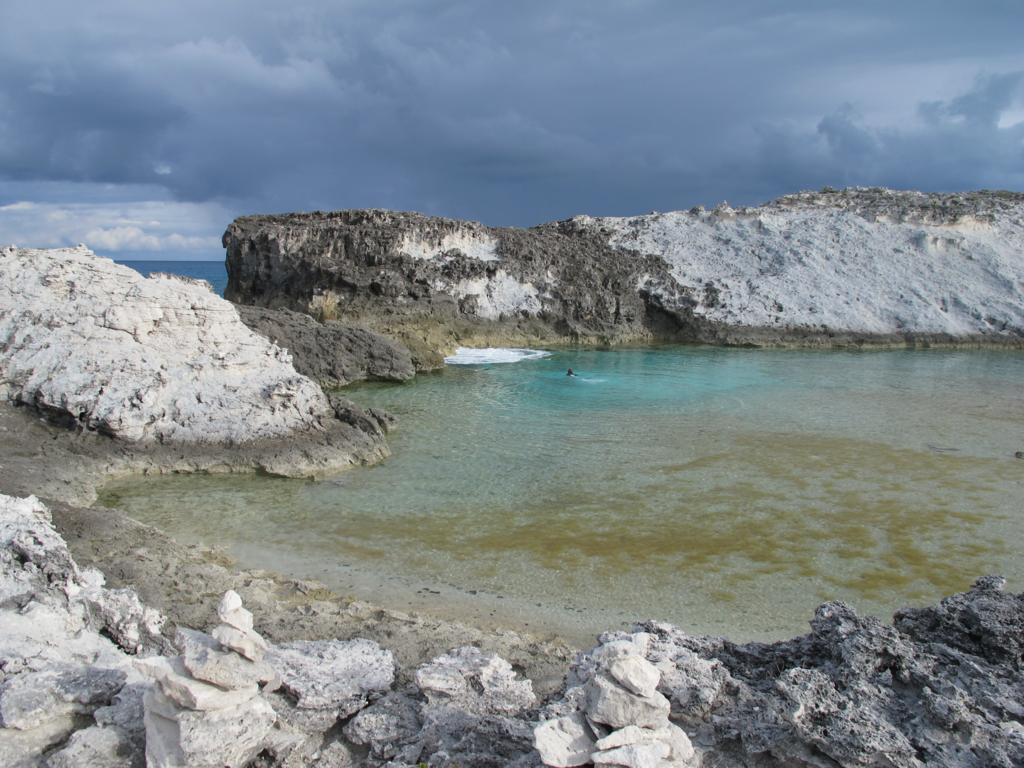
At the northern end of Compass Cay is a beautiful beach and anchorage. We didn’t anchor there because it is around the corner from Conch Cut and the Exuma Sound, which reportedly results in extra surge (i.e., it’s rolly). However, a short walk from the northern end of the beach, northeast towards the sound (follow the inlet that looks like a river), you encounter a large tidal pool known as Rachael’s Bubble Bath. We were lucky enough to be the only ones there!

When waves are pounding the Exuma Sound shore (don’t go there in calm conditions), the water rushes over the jagged coral rocks into a wall of foam. A giant bubble bath! If you get up close to the rocks (be careful, they’re sharp) and wait, a wall of water and foam will rush over your head and bury you.
Rocky Dundas
Rocky Dundas is a pair of cays northwest from our anchorage. The larger and more southern one has two caverns similar to Thunderball Grotto and we had to check it out. We went at low-slack tide based on some write-ups and that is definitely the right call. These could be dangerous otherwise.

The first cavern we entered was a single dome, with a hole in the top and water all around. It was a much more well-defined dome than Thunderball Grotto and had a bit of an echo. The colors were fascinating, with purple along the water line and gold further up.
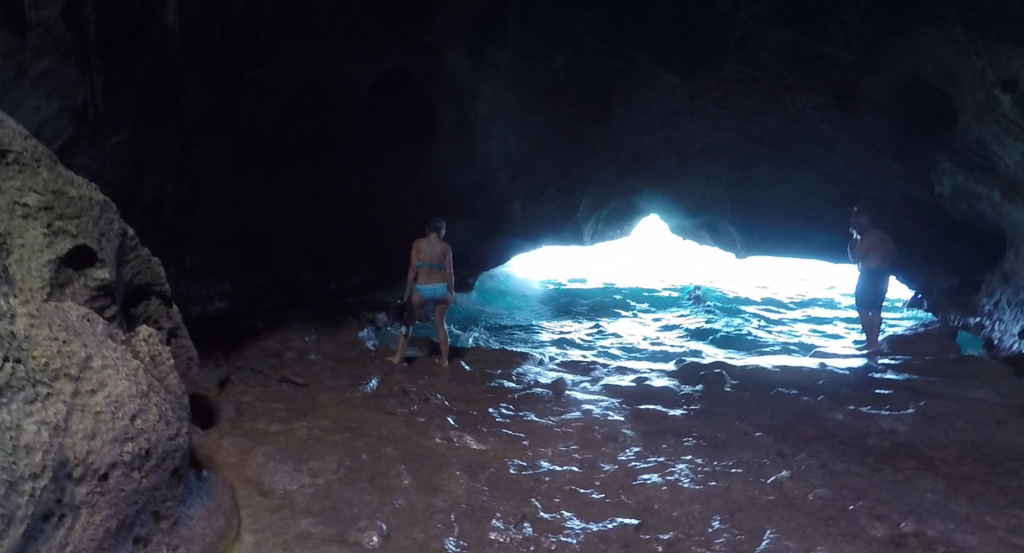
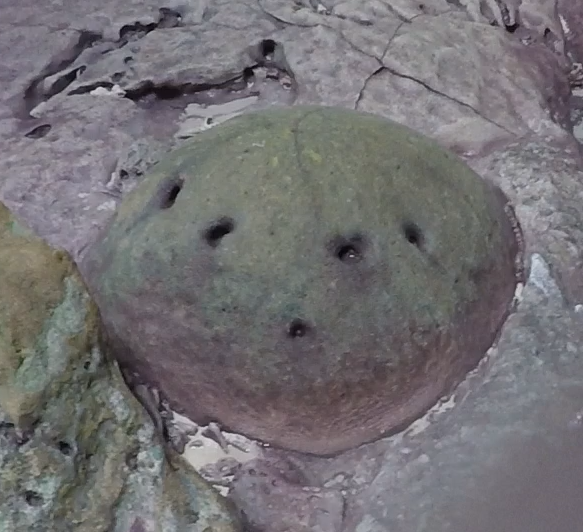
The second cavern was bigger, with the majority being an area you could walk around at low tide and inspect. The floor was smooth, shiny and purple, while the high walls were green. In a few spots we saw fossilized brain coral on the floor, like the one here.
Fowl Cay
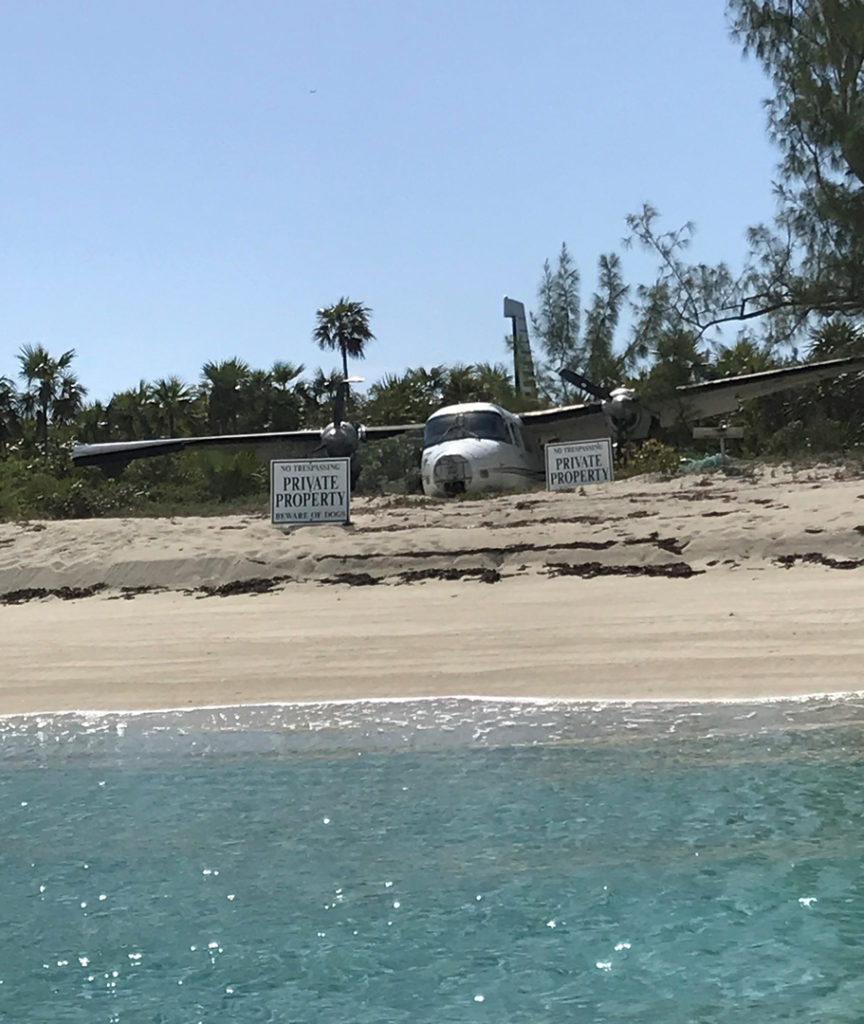
On our dinghy ride back from Rocky Dundas, we tucked into the small bay at Fowl Cay. There was a catamaran anchored here – what a beautiful secluded spot!
Sitting up on the beach was a plane that we would have loved to inspect further, but the signs made it clear that was a bad idea. We’ve been unable to locate any history on the plane or why it is here. Some people speculated that it missed the runway and crashed here, but the runway runs perpendicular to this spot and is 100 yards away.
Pipe Creek
South of our anchorage was the Compass Cay marina and a collection of cays circling a long shallow bay known as Pipe Creek. The marina is the site of the advertised Compass Cay nurse sharks, where guests can swim with them. We dinghied in, saw some large yachts, but no sharks.
The Pipe Creek area is beautiful, with sandbars, beaches and cays all around. There were people playing volleyball on the huge sandbar at Pipe Cay. We checked out the marked anchorage at Thomas Cay, one of several small anchorages in this area. The current was a concern and we saw a fair number of rocks, but it’s tough to beat the view!
Aground!
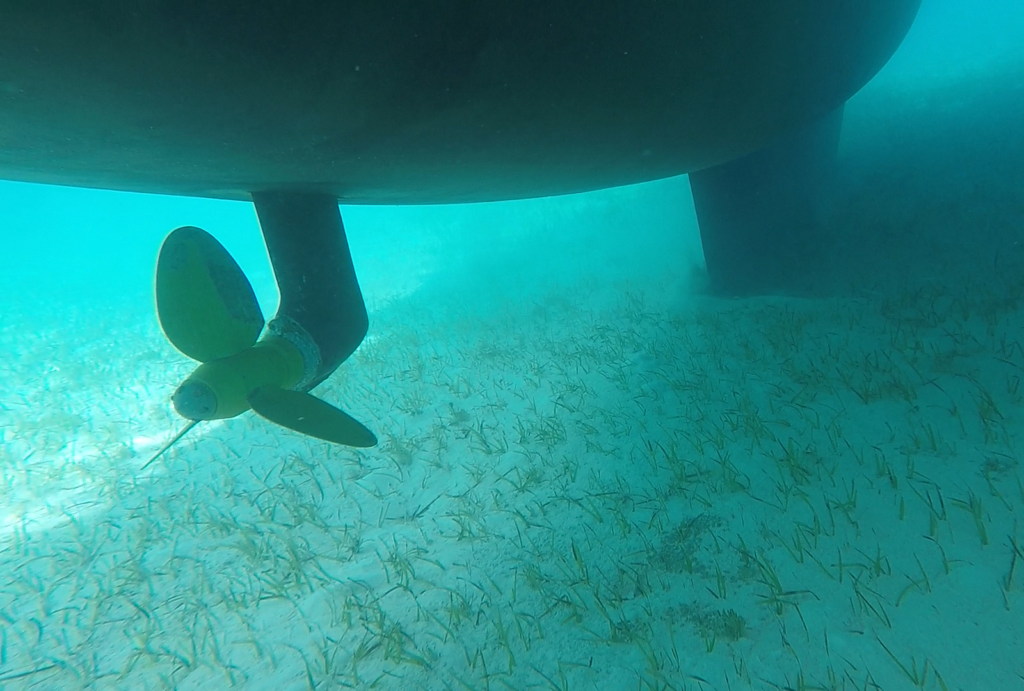
When you enter the sailing world, you hear there are two kinds of sailors – those who have hit ground and those who lie about it. We officially became sailors!
We knew we were (barely) in deep enough water as long as the wind kept us on the western half of our anchor swing. However, one day while we happened to be in the water at low tide inspecting hull damage from the Warderick Wells mooring balls, the wind shifted from the southwest. This wasn’t in the forecast. I watched from below as the boat swung around and the keel began to dig into the sand until there was enough resistance to stop the rotation. Fortunately, the wind and current were mild, and the wind shift only lasted an hour, so the shear stress (sideways force) on the keel wasn’t a big concern.
Now what?! Break out the cleaning tools of course! How often do you get to clean the bottom of the boat while standing? I worked on the zincs while Brenda rubbed the light fuzz off the hulls. Our first grounding was a great experience. Let’s hope they all go this way.

